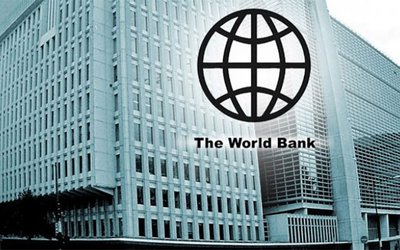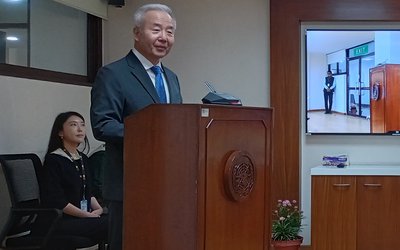
In the policy and program of the 2080/81 financial year, the Government will, among other things, allow the export of sand and aggregate stone. In the policy and program of the next fiscal year presented by the government, it is mentioned that "to avoid harming the environment, emphasis will be placed on gravel, sand and stone mining. It is mentioned in the program that the minerals of Churekshetra will be mined and exported. This program was also in the budget during the previous government. But to stop the program in the budget, an interim order was issued after filing a writ in the Supreme Court.
A few days ago, the President of the Confederation of Nepalese Industries said in a program that if gravel and stone are allowed to be exported, two billion foreign currency can be earned in five years. It can be expected that it will be clear from the budget speech whether this is just a coincidence or a strong evidence of policy advocacy. It is also an issue that has been raised by the private sector for a long time, saying that the road should be opened for the extraction and export of river products such as stone, sand, and gravel.
"Policy and legal arrangements will be made to create income and employment through protection, promotion, commercial mining and extraction of stone mines", in the policy and program of the next financial year it is said, "Geological mapping of the highlands and Himalayan region of the country which has not been mapped so far." Exploration of metals, non-metals and rare geological materials will be carried forward.
In the past, the then Chief minister of the Province also requested the government to amend the policy of exporting sand, soil, stone, gravel etc. from the Chure region. It should be noted that Chure region covers 12.78 percent of the country's total area and is spread over 36 districts from Ilam in the east to Kanchanpur in the west.
It has been claimed that the Chure hills extending from Saptari to Parsa district are working as a weapon of the province. It seems that the federal government should think seriously about its policy and act accordingly. Experts say that there are abundant rocks in the Mahabharata range that stretches from east to west of Nepal. It is possible to produce sufficient quantity of stone and gravel. According to the Department of Mines and Geology, 92 stone quarries have been marked in 14 districts so far. The department has informed that the work of finding mines in other places is going on.
At the same time, Chure region is not only a source of soil, sand and gravel but also rich in natural resources. The then provincial government admitted that the government's policy of extracting, selling and exporting from the Chure area was causing environmental destruction. At that time, the Ministry of Finance made it clear that the policy was announced keeping the environment in mind after conducting an environmental assessment.
On a cursory review of the past, although the policy and guidelines for exporting gravel, stone and sand were introduced some time ago to reduce the trade deficit, it seems that it has not yet been implemented.
On the one hand, there is a case in the court against this policy, the government does not seem to be able to make the necessary legal arrangements for export.
During the tenure of the then President Rambaran Yadav, the government started and implemented the "President Chure Conservation Program" because of the possibility of a major environmental crisis in the Chure area. However, in this area, a large amount of river products are being wasted every year. This is the reason why the river changes its course and causes problems.
In this case, there are those who are of the opinion that if river products can be exported, it should not be delayed. In our neighboring country, India, big projects are underway for the construction of infrastructure. Bihar and Uttar Pradesh, which are near the border of Nepal, need gravel, sand and stone.
It is also necessary to evaluate those who are of the opinion that it is appropriate for Nepal to use river products without affecting the ecological system. On the other hand, environmentalists are opposing the extraction of riverine materials. Such concern is natural as the current excavation standards are being violated in some places.
Development is not possible without the use of natural resources. It is clear that nature should not be exploited in such a way as to affect future generations and cause environmental damage. We should not borrow from future. Therefore, serious and timely attention must be given to the environmental aspects for the extraction of river products. Even in the budget statement of last fiscal year 2079/80, mining and processing of stones and rocks from potential locations identified by the Department of Mines based on environmental assessment and export was not implemented.
It is said that the plan could not be implemented because the law was not made in accordance with the Supreme Court's decision. The study of the Department of Mines and Geology has shown that good benefits can be gained by exporting stone, gravel, sand to India and Bangladesh.
Looking at the situation of exporting to India earlier, it seems that sending stone, gravel and sand to India did not contribute to reducing the trade deficit as the government said.
The parliamentary committee and the government itself concluded that such extraction would lead to great environmental destruction and on the contrary increase the damage. The Natural Resources Committee of the then Legislature Parliament prepared in the year 2066 "Report on stone, gravel, sand mining and export of Chure Bhawar and other areas" highlights the income and environmental risks that occur when the export is open.
The committee was of the view that due to weak state system, unresponsive personnel administration, etc., the country is extracting and collecting natural resources and exporting them.
After the Act was made, the Supreme Court had ordered that stone, aggregate and sand could be mined only for domestic consumption. Earlier, in the full text of the judgment issued in the writ against the government's decision to export construction materials, it is mentioned that nature should not be allowed to be destroyed in the name of increasing exports.
In the federal budget of the financial year 2021-22, the idea of exporting stone and sand was brought. "Based on environmental impact assessment, the trade deficit can be reduced by exporting mining-based stone, stone and sand," the then finance minister said while announcing the budget.
The said decision was challenged in the Supreme Court saying that it would destroy nature and increase the risk of natural disasters. The Constitutional Bench of the Supreme Court issued an interim order and directed the government not to implement the policy of exporting stone, gravel and sand. It is necessary to prepare an umbrella law in consultation with independent experts for proper investigation and consultation with independent experts for quarrying stone and sand only for the construction of private and public infrastructures within the country," said one of the points of the judgment.
It is mentioned in the decision that the Federal Parliament will not export stone, gravel and sand from any part of the country until a law is made in accordance with the constitution and its purpose. The government has also instructed strict monitoring to prevent such exports.
According to the order of the court, the next parliament should focus on enacting the necessary laws as soon as possible. Till then the export should be stopped.
Legalists are of the opinion that although the intention of the court is to prevent the export of such materials, it has allowed the legislature to use its powers to make laws focusing on environmental protection.
The court also said that the export of such materials without checking will have adverse effects on the environment and nature and is against the constitution.
Article 30 of the Constitution states that every citizen has the right to live in a clean and healthy environment. The court said that since the government is confident in the protection of natural resources, every decision should be taken only after proper study and impact assessment. In the order, it is said that the country should protect nature and environment for future generations and it is their right to live in a clean environment.
It is mentioned in the report on the regulation of stones, gravel and sand, "Excavation, exploitation and utilization of natural resources and resources is a regular process. Resources in nature can be used for human useful activities, regardless of whether it is within natural rights, it should be used in such a way that it does not change the regular cycle of nature or have an adverse effect on the overall environment.
"Due to the lack of proper regulation and monitoring of the crusher industries that produce stones, gravel and sand established in the country since the last few years, disasters such as floods, landslides and soil erosion are increasing day by day, especially in the Terai region and its surrounding areas.
As a result, Nepal is facing the reality that there is a serious adverse effect even on the condition of the expensive roads built by the taxes of the Nepalese.
In the summary of the court's order, in addition to other things, the following things are specifically mentioned in that order: Stone, sand etc. are natural resources. Natural resources can only be used for the public benefit of all Nepalis.
In accordance with the prevailing laws, the collection and extraction of natural resources should be done only in such a way that there is no adverse effect on the environment.
According to the legal provisions, a proposal has to be prepared regarding the implementation of any plan, project or program. When implementing such a proposal, environmental impact and test evaluation should be done.
In this way, assessing the environmental impact and quantity is the study and evaluation of whether it can affect the environment and, if it does, eliminate or reduce such an impact.
According to the provisions of the Environmental Protection Regulations, the special role of the local people or bodies in relation to the implementation of the proposal according to their suggestions is to issue a public notice and take suggestions from the village development committee or municipality or schools, hospitals, health posts and interested persons or organizations in the area.
On the whole, there is a reality to see how much the extraction of stone, gravel etc. has contributed to the business loss and how sustainable it is, on the other hand, a "deep and comprehensive analysis" of the negative impact on the environment and future generations and the fertile arable land of the Terai should be done.
The law, environment, economic perspective and diplomatic and economic relations with the neighboring country India are also connected with the gravel stone. Because of this, rather than making hasty decisions, its strengths, opportunities, weaknesses, threats, "SWOT" analysis and public opinion is sine qua non. It seems wiser to decide after suggestions from the relevant agency and authorities .
- “Kolahalko Kolaj “: A Collection Of Scattered Memories By Prakash Sayami
- Apr 02, 2025
- Nepal-India Trade, Transit And Unauthorized Trade: Some Considerations
- Jan 16, 2025
- PM Oli’s Forthcoming Visit To China: Will The Achievement Be Complete?
- Nov 29, 2024
- Obituary To Dr. Mohan Man Sainju!
- Nov 02, 2024
- Donations To Political Parties: Some Reflections
- Oct 24, 2024















